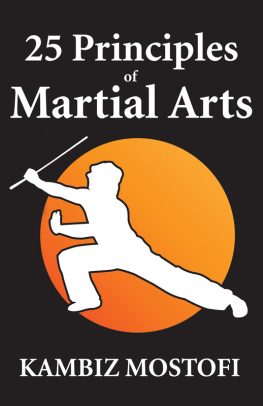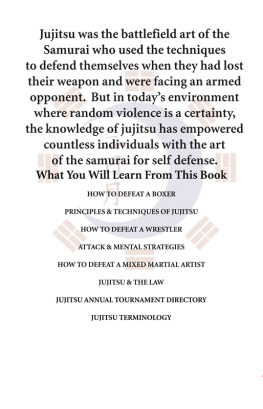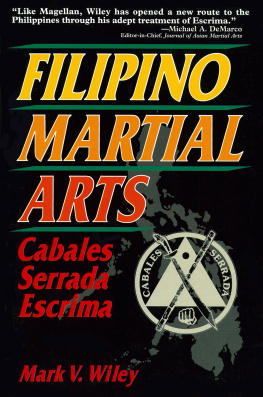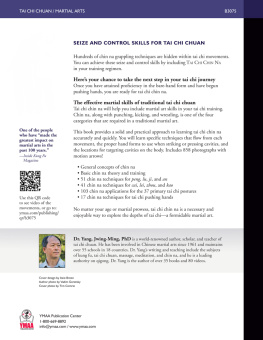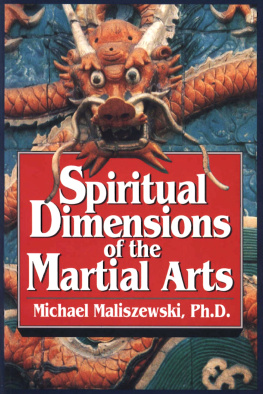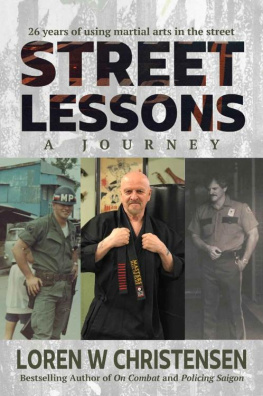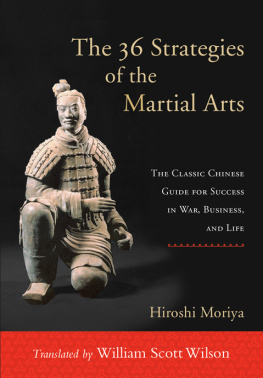Kambiz Mostofizadeh - 25 Principles of Martial Arts: Book of strategies
Here you can read online Kambiz Mostofizadeh - 25 Principles of Martial Arts: Book of strategies full text of the book (entire story) in english for free. Download pdf and epub, get meaning, cover and reviews about this ebook. year: 2011, publisher: Mikazuki Publishing House, genre: Religion. Description of the work, (preface) as well as reviews are available. Best literature library LitArk.com created for fans of good reading and offers a wide selection of genres:
Romance novel
Science fiction
Adventure
Detective
Science
History
Home and family
Prose
Art
Politics
Computer
Non-fiction
Religion
Business
Children
Humor
Choose a favorite category and find really read worthwhile books. Enjoy immersion in the world of imagination, feel the emotions of the characters or learn something new for yourself, make an fascinating discovery.
- Book:25 Principles of Martial Arts: Book of strategies
- Author:
- Publisher:Mikazuki Publishing House
- Genre:
- Year:2011
- Rating:4 / 5
- Favourites:Add to favourites
- Your mark:
- 80
- 1
- 2
- 3
- 4
- 5
25 Principles of Martial Arts: Book of strategies: summary, description and annotation
We offer to read an annotation, description, summary or preface (depends on what the author of the book "25 Principles of Martial Arts: Book of strategies" wrote himself). If you haven't found the necessary information about the book — write in the comments, we will try to find it.
[A] large amount of resources and more individuals in your organization do not necessarily equate to victory over your opponent, if you have lost the advantage of formlessness.
25 Principles of Martial Arts: Book of strategies — read online for free the complete book (whole text) full work
Below is the text of the book, divided by pages. System saving the place of the last page read, allows you to conveniently read the book "25 Principles of Martial Arts: Book of strategies" online for free, without having to search again every time where you left off. Put a bookmark, and you can go to the page where you finished reading at any time.
Font size:
Interval:
Bookmark:
DEDICATED TO ALL EDUCATORS
THANK YOU FOR EDUCATING
ISBN-13: 978-1-937981-23-5
Copyright 2011 by Mikazuki Publishing House
Author: Kambiz Mostofizadeh
Illustrations by: Hoornaz Mostofizadeh
Publisher: Mikazuki Publishing House
Except for use in a review, the reproduction or utilization of this work in any form or by an electronic, mechanical, or other means, now known or hereafter invented, including xerography, photocopying, recording, in any information storage and retrieval system, is forbidden and prohibited without the written permission of the author.
DISCLAIMER: THE PUBLISHER AND AUTHOR ACCEPT NO RESPONSIBILITY FOR YOUR ACTIONS BASED ON THIS BOOK.
The information contained within this book is for educational and commercial purposes and does not necessarily reflect the views of the publisher.
Having practiced martial arts for the majority of my life and having read many books related to martial arts, I was intrigued at the thought of a book that would synthesize the mode of thought in to a system that could be drawn upon by students. On my travels throughout Asia, I learned of and experienced many unique and delightful cultural customs and traditions. Martial arts is an ancient art form and cultural landmark of human triumph in the quest for self-preservation. The principles, philosophies, and study of martial arts have existed for thousands of years and have been discussed by Sun Tzu, Lao Tzu, Miyamoto Musashi, Von Clausewitz, Machiavelli, and others. The great breadth of knowledge contained among so many great writers and leaders humbled me with the idea of creating one book that would be able to entirely explain the principles of martial arts. I understood the ambitious task before me and entered in to it with great humility. I invite you to read and enjoy the 25 Principles of Martial Arts and hope that you will find the same satisfaction in reading it as I did in writing it.
The Principle of Formlessness depends on concealing your actions, moves, techniques, operations, abilities, thoughts, processes, and actions until the very last moment. In individual combat, your opponent will attempt to read your defenses and will try to foil your actions if you give off signals notifying your opponent of your attack. When the opponent is able to see your form, they are able to perceive your gaps. This will give your opponent the advantage when attacking you. If the opponent is unable to see your form, they are unable to find your gaps, making your vulnerabilities hidden. If your vulnerabilities are exposed, then your weaknesses are exposed. Not revealing your shape or form, forces the opponent to have to guess what you are doing, which frustrates them, and forces them to make mistakes they would not normally make. In contrast, if you are able to see the form of your opponent, then attacking them is easier because their vulnerabilities become apparent to you, thus allowing you to develop strategies that are based on your opponent, rather than pre-decided strategies. Taking a strategy that has been successful previously, and applying it to another situation, with the belief that it will work again, is pure folly. It will most likely result in your loss, because the strategy was not tailored to you and your opponents situation.
The advantage of surprise is easily gained through the application of the Principle of Formlessness. Large amount of resources and more individuals in your organization do not necessarily equate to victory over your opponent if you have lost the advantage of formlessness. This is because your opponent will prepare and ready themselves with defenses which may counterbalance your attack, essentially nullifying your actions. The silence of your actions hide your form and confuse your opponents. If you want to have the advantage of surprise and deny your enemies or opponents the opportunity to prevent your progression, be very careful to mask your actions and reveal no form. In group combat operations, the force that reveals their position, reveals their power, reveals their forces, makes themselves vulnerable and open to their opponents advances. Hiding your form has the advantage also of denying your opponents the opportunity to make an assessment of your strength, thereby denying them knowledge. If your form is revealed, it does not always lead to your defeat, but it may reveal the intricacies of your inner workings, thereby negating your strategy. You can, however, to mask your larger action.
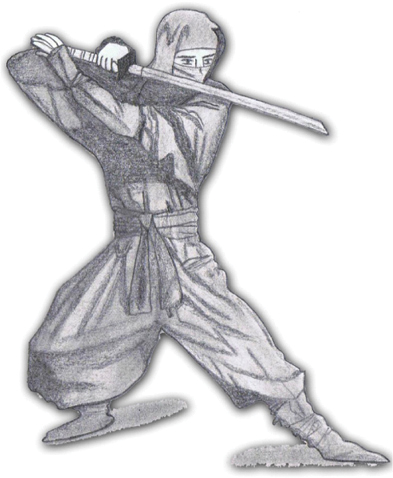
The 2nd Principle of Yielding teaches us not to force an issue, to not attempt to meet force with force, and to not use force in the place of finesse. The technical application of a Juji-Gatame or an Armbar in individual combat, applies the whole of the body weight of an individual, against the weight of the opponents arm. The 2nd Principle of Yielding states that the opponents force should not be met head on with force, but to use the blending of forces so you can control the opponent. In relationships, often it is the yielding of one partner, that creates counterforce for receiving the advantage. The individual that yields on the mat or in real life gains the advantage because, the inevitable opportunity will arise that will allow the individual that has previously yielded to derive greater power.
Yielding is the opposite of standing your ground , although yielding is not permanently retreating. Yielding is not permanent, but rather a temporary action that uses strategy to seemingly put the opponent in the advantage for a short period of time. Martial arts principles subscribe to the duality of forces as witnessed in strikes and defenses, throws and counter-throws, and holds and escapes. The opponents advantage quickly disappears because your yielding creates the opportunity for you to focus the bulk of your strength against the weakest parts of your opponent. (For ex. joints & throat) Yielding is being pliable and flexible. Each situation demands its own answer and approach. In many situations, it is normal to be rigid however, by yielding you are gaining the advantage.
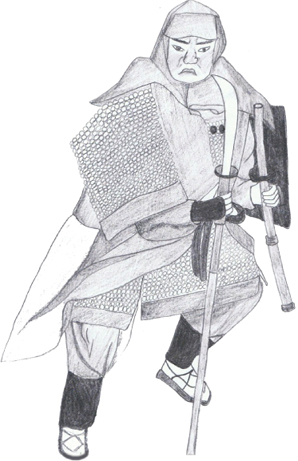
When you are yielding, your opponent gains a false sense of confidence which ruins their defensive thought processes. This results in the opponent attacking without gauging the consequences of their actions. In individual combat, the action of pivoting and stepping out of the way of an attack is yielding. When an opponent pushes you and you pull the opponent while turning, this is yielding. When an opponent pulls you and you push while turning, this is yielding. The average opponent, not trained in martial arts that use yielding including Aikido, Jujitsu, Judo and others, will attempt to use strength to strike you , throw you, lock your joints, or choke you. The reliance of pure yielding will defeat the mixed use of strength and yielding. Yielding in its essence, makes the applier of its principle an elusive opponent because, your opponents cannot strike or control what has no base to be attacked. If I move forward and you move in to me, it is easier to yield. You cannot yield against that which you cannot touch. In group combat, yielding would be similar to the 10th Principle of Retreating, with the key difference being that the 2nd Principle of Yielding does not create permanent retreat, but temporarily creates time and space for using leverage to concentrate your force using flanking (angled, unorthodox, unpredictable) movements. The goal is to reverse the weakness that you possess and be able to convert this into a strength that will work in your favor.
Font size:
Interval:
Bookmark:
Similar books «25 Principles of Martial Arts: Book of strategies»
Look at similar books to 25 Principles of Martial Arts: Book of strategies. We have selected literature similar in name and meaning in the hope of providing readers with more options to find new, interesting, not yet read works.
Discussion, reviews of the book 25 Principles of Martial Arts: Book of strategies and just readers' own opinions. Leave your comments, write what you think about the work, its meaning or the main characters. Specify what exactly you liked and what you didn't like, and why you think so.

